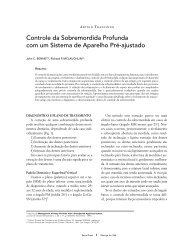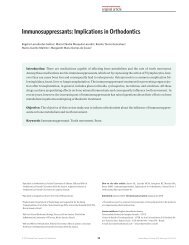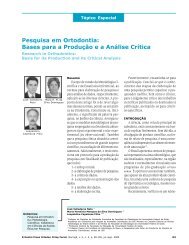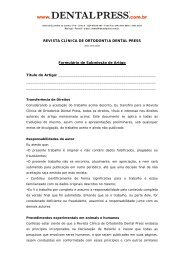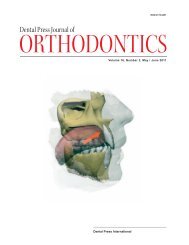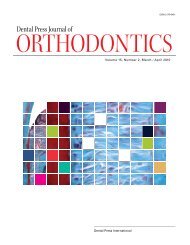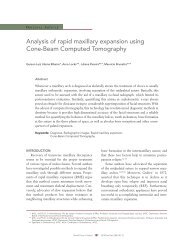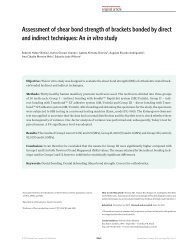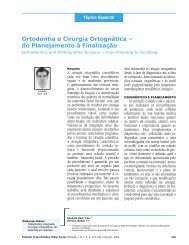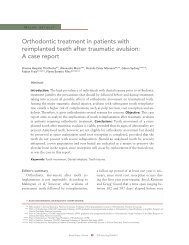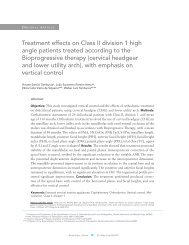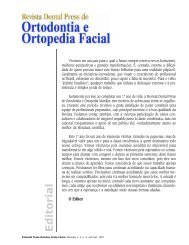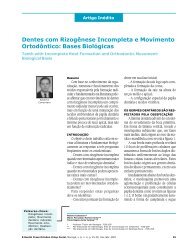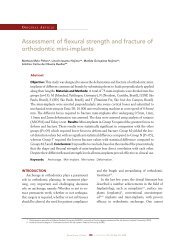Dental Press
Dental Press
Dental Press
Create successful ePaper yourself
Turn your PDF publications into a flip-book with our unique Google optimized e-Paper software.
Consolaro AP D C PL ABFigure 3. Area of compression of the periodontal ligament (PL) of the rat’smolar 7 days after been moved. The larger arrow indicates the directionof the applied force. The small arrows indicate the cementoblasts, whichare absent in the area of pressure, indicating efficiency of the applied force.Despite the compression of periodontal ligament, cells and fibers arepresent in the area, as well as cementoblasts, osteoblasts and also theclasts (circles). It is important to notice the morphological pattern of normaldental pulp (P). D = dentin, C = cementum; AB = alveolar bone. (HE, 25X).Pbe an increased local production of cellular mediatorsproduced by metabolic stress and by the mild inducedinflammation. The periodontal ligament is alive, metabolicallyviable, with blood supply and with clasts sufficientlyactivated to resorb the periodontal bone surfaceof the tooth socket (Fig 5). The periodontal boneresorption occurs in front of the compressed periodontalligament and therefore it is nominated frontalbone resorption (Fig 5). Gradually, over few days, thetooth will be displaced to one side of the tooth socket,reoccupying its new place, and ligament cells restorethe average thickness of 0.25 mm. In the process, especiallyin the apical region, vascular rupture does notoccur in tissues that enter into the root canal. Fromthis normal restored relationship, the periodontal ligamentand surrounding tissues will be reorganized in afew days. After 15 to 21 days it is ready to reactivatethe appliance as the tissues return to normal.CTCCPDCTCTPDPLABACBFigure 4. A) Area of compression of the periodontal ligament (PL) of rat’s molar 7 days after been moved. The arrow indicates the direction of theapplied force. The clasts (CT) in the root surface indicate efficiency of the applied force. In B, there is the morphological pattern of normal dental pulpwith odontoblastic layer (small arrows). D = dentin, C = cementum; AB = alveolar bone. (HE, 40X).© 2011 <strong>Dental</strong> <strong>Press</strong> Endodontics 17<strong>Dental</strong> <strong>Press</strong> Endod. 2011 apr-june;1(1):14-20



